Grow Beets at Home? Absolutely! Imagine pulling vibrant, earthy beets straight from your own backyard, ready to be roasted, pickled, or added to a refreshing salad. Forget those bland, store-bought beets – we’re talking about flavor explosions and the satisfaction of knowing exactly where your food comes from.
For centuries, beets have been a staple in diets across the globe, from ancient Rome where they were valued for their medicinal properties, to Eastern Europe where they form the heart of iconic dishes like borscht. But you don’t need a sprawling farm to enjoy these nutritional powerhouses.
In today’s busy world, knowing how to grow beets at home offers more than just fresh produce. It’s about connecting with nature, reducing your carbon footprint, and taking control of what you eat. Plus, let’s be honest, there’s something incredibly rewarding about nurturing a tiny seed into a thriving plant. This DIY guide will equip you with simple, effective tricks and hacks to cultivate a bountiful beet harvest, even if you’re a complete beginner. I’m excited to share my favorite tips and tricks with you, so let’s get started!
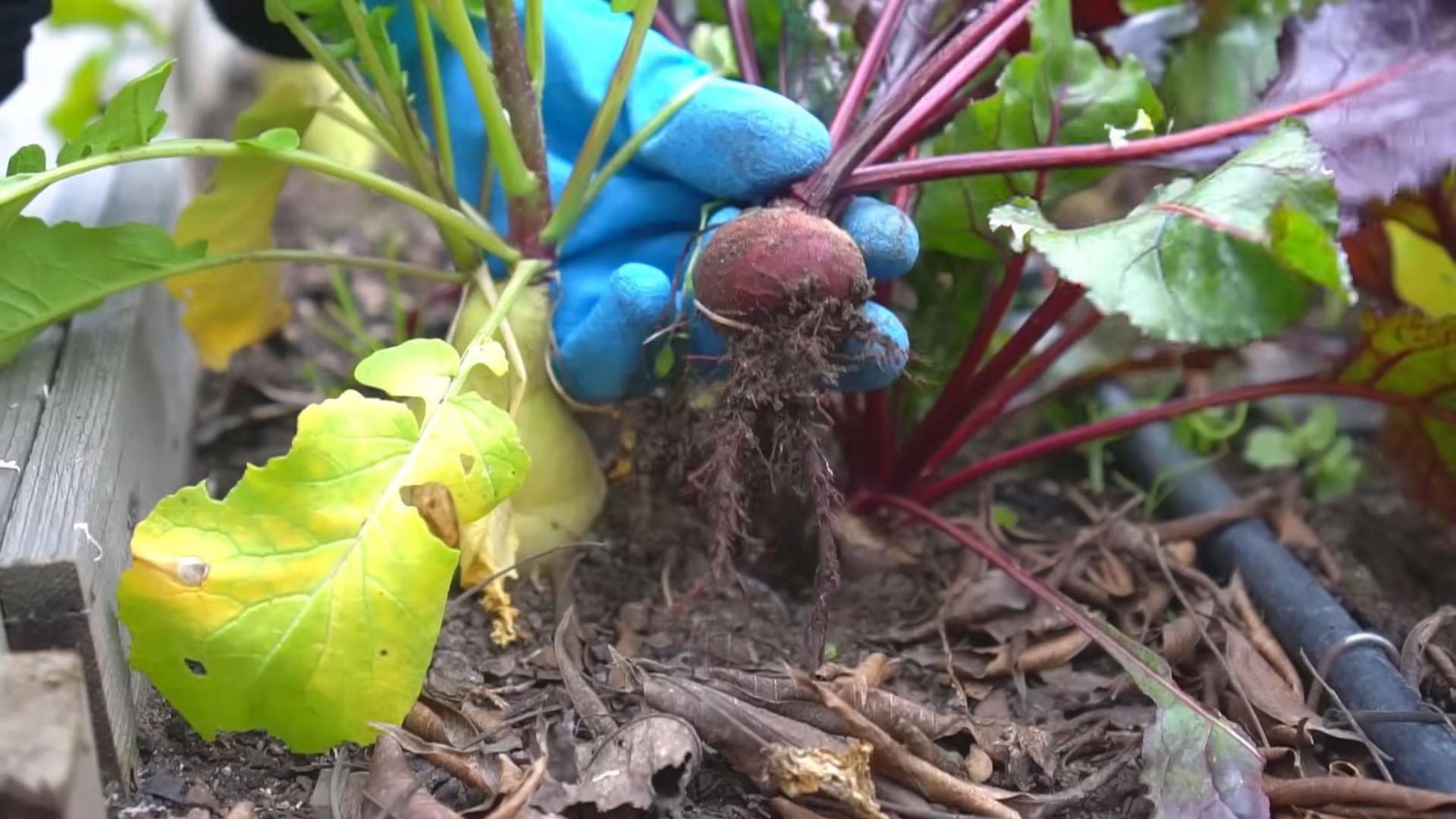
Growing Beets at Home: A Beginner’s Guide
Hey there, fellow gardening enthusiasts! I’m so excited to share my experience growing beets at home. Beets are not only delicious and nutritious, but they’re also surprisingly easy to cultivate, even if you’re a complete beginner like I was not too long ago. This guide will walk you through every step, from choosing the right variety to harvesting your vibrant, earthy bounty. Let’s get our hands dirty!
Choosing the Right Beet Variety
Before we even think about planting, let’s talk about beet varieties. There’s more to beets than just the standard red ones! Here are a few popular choices:
* Detroit Dark Red: This is a classic, reliable variety known for its deep red color and sweet flavor. It’s a great all-around choice for beginners.
* Chioggia: If you’re looking for something a little different, Chioggia beets are stunning! They have alternating red and white rings inside, making them a beautiful addition to salads.
* Golden: As the name suggests, these beets are golden yellow. They have a milder, sweeter flavor than red beets and won’t stain your hands or clothes.
* Cylindra: These beets are long and cylindrical, making them perfect for slicing and canning. They also mature relatively quickly.
I personally love growing Detroit Dark Red because they are so versatile, but feel free to experiment and find your favorite!
Preparing Your Beet Bed
Beets thrive in well-drained soil that’s rich in organic matter. Here’s how to prepare your beet bed for success:
* Sunlight: Beets need at least 6 hours of sunlight per day. Choose a location in your garden that gets plenty of sun.
* Soil: Beets prefer a slightly acidic to neutral soil pH (around 6.0 to 7.0). You can test your soil pH with a simple soil testing kit from your local garden center.
* Amendments: Amend your soil with compost or well-rotted manure to improve drainage and fertility. Beets are heavy feeders, so adding organic matter is crucial. Avoid using fresh manure, as it can burn the roots.
* Loosening the Soil: Beets need loose soil to develop properly. Use a garden fork or tiller to loosen the soil to a depth of at least 12 inches. Remove any rocks or debris that could hinder root growth.
* Leveling: Rake the soil smooth to create a level planting surface.
Planting Your Beet Seeds
Now for the fun part – planting! Beets are typically planted directly in the ground, as they don’t transplant well.
1. Timing: Beets are a cool-season crop, so plant them in early spring or late summer. In the spring, plant them 2-4 weeks before the last expected frost. For a fall harvest, plant them 6-8 weeks before the first expected frost. I usually aim for mid-April for my spring planting.
2. Spacing: Sow beet seeds about 1 inch deep and 1-2 inches apart in rows that are 12-18 inches apart. Beets are actually seed clusters, so each “seed” may produce multiple seedlings. Don’t worry, we’ll thin them out later.
3. Watering: Gently water the soil after planting to ensure good seed-to-soil contact. Keep the soil consistently moist until the seeds germinate.
4. Germination: Beet seeds typically germinate in 5-10 days, depending on soil temperature and moisture levels.
Thinning Your Beet Seedlings
As I mentioned earlier, beet seeds often produce multiple seedlings. Thinning is essential to give your beets enough space to grow.
1. When to Thin: Thin your beet seedlings when they are about 2-3 inches tall.
2. How to Thin: Carefully pull out the weaker seedlings, leaving the strongest ones spaced about 3-4 inches apart. You can use small scissors to snip the unwanted seedlings at the soil line if you’re worried about disturbing the roots of the remaining plants.
3. Don’t Waste the Greens!: The thinned seedlings are perfectly edible! Add them to salads or sauté them like spinach.
Caring for Your Growing Beets
Once your beets are established, here’s how to keep them happy and healthy:
* Watering: Beets need consistent moisture to thrive. Water them deeply once or twice a week, especially during dry periods. Avoid overhead watering, as it can promote fungal diseases.
* Weeding: Keep your beet bed free of weeds, which can compete with your beets for nutrients and water. Hand-pull weeds carefully to avoid disturbing the beet roots.
* Fertilizing: Beets benefit from a side dressing of fertilizer about 4-6 weeks after planting. Use a balanced fertilizer or a fertilizer that’s high in phosphorus and potassium. I like to use compost tea as a gentle, organic fertilizer.
* Mulching: Apply a layer of mulch around your beets to help retain moisture, suppress weeds, and regulate soil temperature. Straw, wood chips, or shredded leaves are all good options.
Dealing with Pests and Diseases
Beets are generally resistant to pests and diseases, but here are a few things to watch out for:
* Leaf Miners: Leaf miners are small insects that tunnel through beet leaves, leaving unsightly trails. You can control leaf miners by covering your beets with row covers or by spraying them with insecticidal soap.
* Flea Beetles: Flea beetles are tiny jumping insects that can chew small holes in beet leaves. You can control flea beetles by covering your beets with row covers or by spraying them with insecticidal soap.
* Cercospora Leaf Spot: Cercospora leaf spot is a fungal disease that causes small, circular spots on beet leaves. You can prevent Cercospora leaf spot by providing good air circulation and avoiding overhead watering. If you see signs of the disease, remove infected leaves and spray your beets with a fungicide.
Harvesting Your Beets
The moment we’ve all been waiting for – harvesting!
1. When to Harvest: You can harvest beets at any size, but they are typically ready to harvest when the roots are 1-3 inches in diameter. Check the seed packet for the specific maturity date of your variety.
2. How to Harvest: Gently loosen the soil around the beets with a garden fork. Grasp the beet greens near the base and pull the beet straight up out of the ground.
3. Preparing for Storage: Cut off the beet greens about 1-2 inches above the root. You can save the greens for cooking – they’re delicious sautéed or added to salads. Gently brush off any excess soil from the beets.
4. Storing Your Beets: Store your beets in a cool, dark, and humid place, such as a refrigerator or root cellar. They will keep for several weeks or even months if stored properly. I like to store mine in a plastic bag in the crisper drawer of my refrigerator.
Enjoying Your Homegrown Beets
Congratulations, you’ve successfully grown beets at home! Now it’s time to enjoy the fruits (or rather, roots) of your labor. Here are a few ideas:
* Roasted Beets: Roasting beets brings out their natural sweetness. Simply toss them with olive oil, salt, and pepper, and roast them in the oven until tender.
* Beet Salad: Combine roasted or boiled beets with goat cheese, walnuts, and a balsamic vinaigrette for a delicious and colorful salad.
* Pickled Beets: Pickled beets are a classic way to preserve your harvest.
* Beet Greens: Don’t forget about the beet greens! They can be sautéed, steamed, or added to soups and stews.
* Beet Juice: Beet juice is a healthy and refreshing drink.
Troubleshooting Common Beet Growing Problems
Even with the best planning, sometimes things don’t go exactly as expected. Here are some common problems you might encounter and how to address them:
* Poor Germination: If your beet seeds aren’t germinating well, make sure the soil is consistently moist and the soil temperature is warm enough. You can also try soaking the seeds in water for 24 hours before planting to improve germination rates.
* Slow Growth: If your beets are growing slowly, make sure they are getting enough sunlight, water, and nutrients. Amend your soil with compost or fertilizer to provide them with the nutrients they need.
* Forked Roots: Forked roots can be caused by compacted soil or rocks in the soil. Make sure to loosen the soil thoroughly before planting and remove any rocks or debris.
* Bolting: Bolting is when beets prematurely send up a flower stalk. This can be caused by stress, such as hot weather or inconsistent watering. Choose bolt-resistant varieties and provide consistent moisture to prevent bolting.
Tips for a Bountiful Beet Harvest
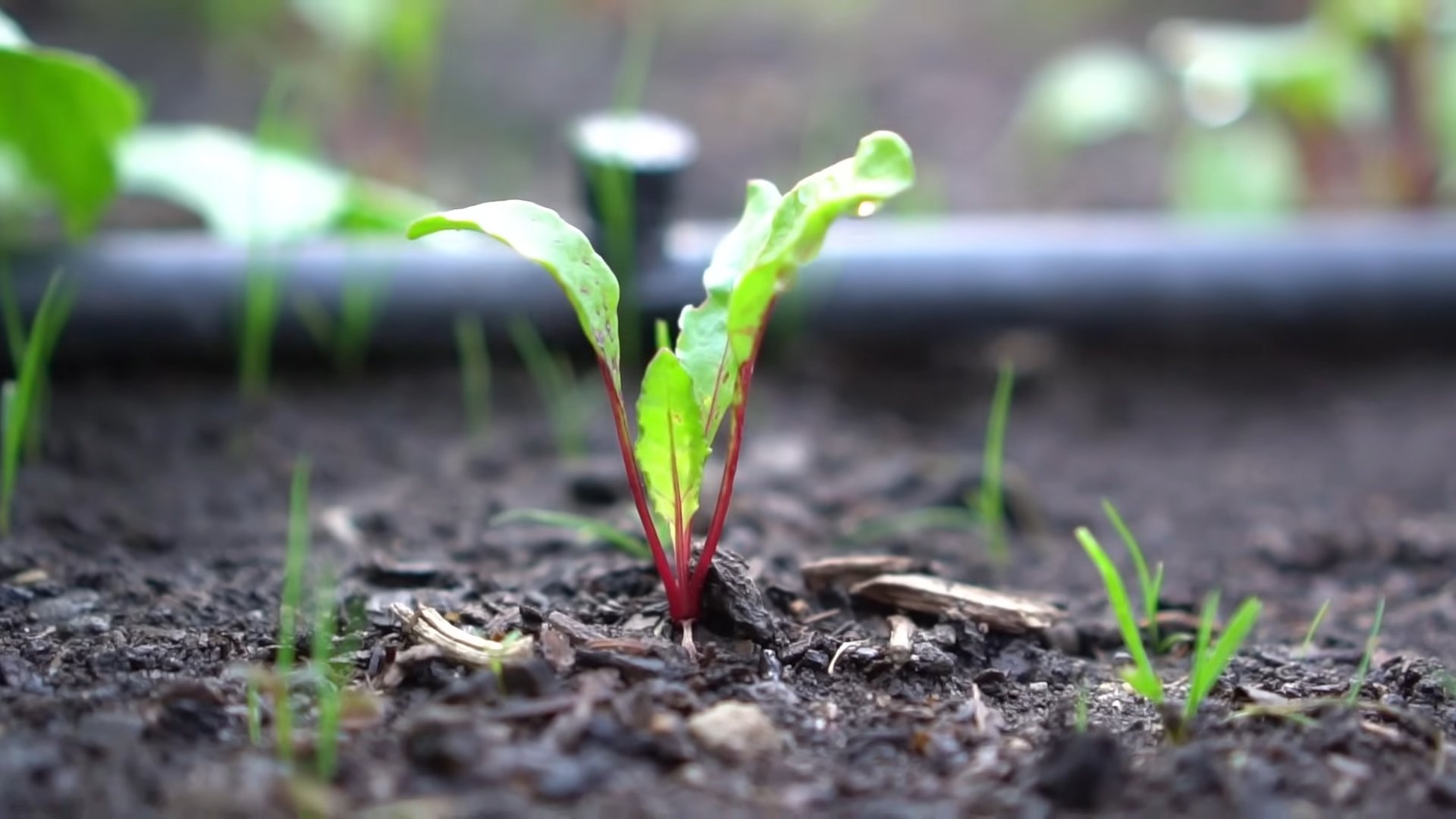
Conclusion
So, there you have it! Growing beets at home is not only achievable but also incredibly rewarding. From the vibrant greens that add a nutritious boost to salads to the earthy, sweet roots perfect for roasting, pickling, or juicing, beets offer a versatility that makes them a must-have in any home garden. We’ve walked you through the process, from selecting the right variety and preparing your soil to nurturing your seedlings and harvesting your bounty.
But why is this DIY trick a must-try? Beyond the satisfaction of growing your own food, consider the superior flavor and freshness you simply can’t replicate with store-bought beets. Imagine pulling a beet straight from the earth, its skin still glistening with soil, and tasting the difference – a sweetness intensified by the sun and a texture that’s undeniably crisp. Plus, you have complete control over the growing process, ensuring your beets are free from harmful pesticides and herbicides.
Growing beets at home is an investment in your health, your taste buds, and your connection to nature.
Looking for variations? Absolutely! Experiment with different beet varieties. Golden beets offer a milder flavor and won’t stain your hands as much as red beets. Chioggia beets, with their beautiful concentric rings, are a visual delight. For a spicy kick, try adding a touch of chili powder to your soil. You can also interplant beets with other vegetables like lettuce or radishes to maximize space in your garden. Consider succession planting, sowing seeds every few weeks, to ensure a continuous harvest throughout the growing season. Don’t forget to utilize the beet greens! Sauté them with garlic and olive oil for a delicious and nutritious side dish. You can also add them to smoothies or soups.
We’ve covered the essentials, but the real magic happens when you get your hands dirty. Don’t be afraid to experiment, adapt, and learn from your own experiences. Every garden is unique, and what works for one person may not work for another. The key is to observe, adjust, and enjoy the process.
Now, it’s your turn. Grab some beet seeds, prepare your garden bed, and embark on this exciting journey of growing beets at home. We’re confident that you’ll be amazed by the results. And most importantly, we want to hear about your experience! Share your photos, tips, and challenges in the comments below. Let’s create a community of beet-loving gardeners who inspire and support each other. Happy gardening!
Frequently Asked Questions (FAQ)
What is the best time of year to plant beets?
The best time to plant beets depends on your climate. In general, beets are a cool-season crop, meaning they thrive in temperatures between 60°F and 70°F (15°C and 21°C). For a spring crop, sow seeds 2-4 weeks before the last expected frost. For a fall crop, sow seeds 6-8 weeks before the first expected frost. In warmer climates, you can plant beets throughout the fall and winter. Check your local frost dates to determine the optimal planting time for your region.
How much sun do beets need?
Beets need at least 6 hours of direct sunlight per day to thrive. While they can tolerate some shade, especially in hotter climates, insufficient sunlight will result in smaller roots and less vibrant greens. Choose a location in your garden that receives full sun for the best results.
What kind of soil is best for growing beets?
Beets prefer well-drained, loose soil that is rich in organic matter. Heavy clay soil can hinder root development, resulting in misshapen or stunted beets. Amend your soil with compost or other organic matter to improve drainage and fertility. A slightly acidic to neutral soil pH (6.0-7.0) is ideal. Before planting, consider getting a soil test to determine the pH and nutrient levels of your soil. This will help you make any necessary amendments to ensure optimal growth.
How often should I water my beets?
Beets need consistent moisture to develop properly. Water deeply and regularly, especially during dry periods. Aim to keep the soil consistently moist but not waterlogged. Overwatering can lead to root rot, while underwatering can cause the beets to become tough and woody. A good rule of thumb is to water when the top inch of soil feels dry to the touch. Mulching around your beet plants can help retain moisture and suppress weeds.
How far apart should I plant beet seeds?
Beet seeds should be planted about 1-2 inches apart and ½ inch deep. Because beet seeds are actually clusters of seeds, you may need to thin the seedlings once they emerge. When the seedlings are about 2-3 inches tall, thin them to 3-4 inches apart. This will give the beets enough space to develop properly. You can transplant the thinned seedlings to another location in your garden or use the greens in salads.
When are beets ready to harvest?
Beets are typically ready to harvest 50-70 days after planting, depending on the variety. You can harvest them at any size, but they are generally best when they are 2-3 inches in diameter. To harvest, gently loosen the soil around the beet and pull it up by the greens. If the soil is dry, water it beforehand to make harvesting easier. You can also harvest the beet greens at any time, but be careful not to remove too many leaves at once, as this can stunt the growth of the roots.
Why are my beet greens growing but not the roots?
Several factors can contribute to this issue. Insufficient sunlight, poor soil, overcrowding, and lack of nutrients can all hinder root development. Make sure your beets are getting at least 6 hours of direct sunlight per day. Amend your soil with compost or other organic matter to improve drainage and fertility. Thin your seedlings to 3-4 inches apart to give them enough space to grow. Fertilize your beets with a balanced fertilizer or a fertilizer specifically formulated for root vegetables.
Can I eat the beet greens?
Yes! Beet greens are highly nutritious and delicious. They can be eaten raw in salads or cooked like spinach. They are a good source of vitamins A and C, as well as iron and fiber. To prepare beet greens, wash them thoroughly and remove any tough stems. Sauté them with garlic and olive oil, add them to soups or stews, or use them in smoothies.
How do I store beets after harvesting?
To store beets, cut off the greens, leaving about an inch of stem. Gently brush off any excess soil, but do not wash them. Store the beets in a cool, dark, and humid place, such as a root cellar or refrigerator. They can be stored for several months under the right conditions. Place them in a perforated plastic bag or wrap them in a damp cloth to prevent them from drying out.
What are some common pests and diseases that affect beets?
Some common pests that affect beets include aphids, flea beetles, and leaf miners. Diseases that can affect beets include leaf spot, damping-off, and root rot. To prevent pests and diseases, practice good garden hygiene. Remove any weeds or debris that can harbor pests or diseases. Rotate your crops to prevent soilborne diseases from building up. Use organic pest control methods, such as insecticidal soap or neem oil, to control pests. Ensure proper drainage to prevent root rot.

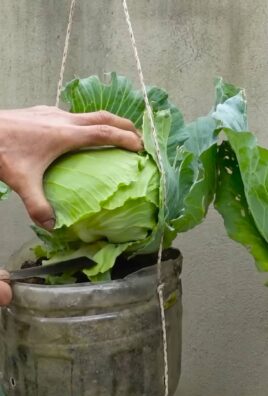
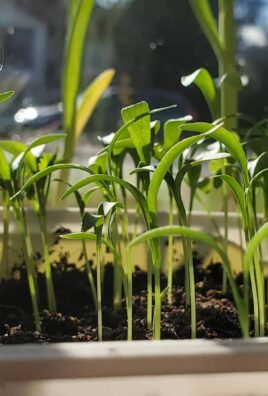
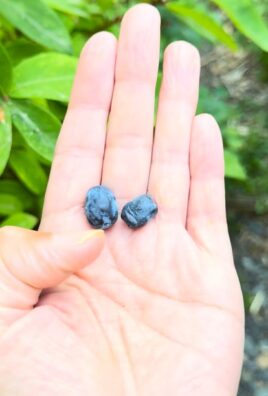
Leave a Comment